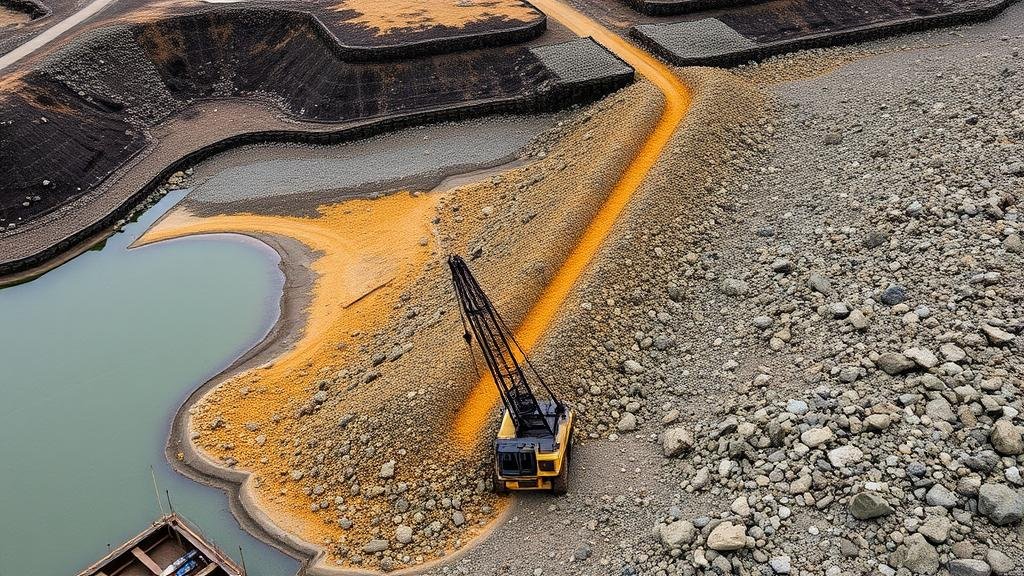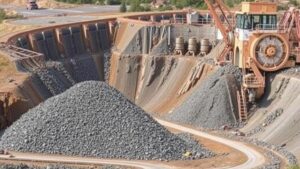Recovering Gold From Abandoned Mining Dredge Tailings
Recovering Gold From Abandoned Mining Dredge Tailings
Throughout history, gold mining has been a lucrative endeavor, often characterized by its environmental challenges. One persistent issue is the presence of abandoned mining dredge tailings, left behind after the extraction of gold from sediment. These tailings are not merely waste; they may contain significant gold reserves that can be economically viable to recover. This article explores the methods and technologies used for recovering gold from these tailings, emphasizing both environmental and economic implications.
Understanding Dredge Tailings
Dredge tailings are the leftover materials after gold has been extracted from the earth. Mining dredges operate by removing large volumes of sediment and separating gold through hydraulic processes. This results in the creation of tailings, which typically consist of a mixture of gravel, sand, silt, and mineral particles. According to a report from the U.S. Geological Survey, it is estimated that the average recovery rate of gold during mining operations is around 70-90%. As a result, the remaining 10-30% of gold can still be present in tailings and can amount to thousands of ounces per site.
Benefits of Recovering Gold from Tailings
Recovering gold from abandoned dredge tailings offers multiple benefits that extend beyond profit. e include:
- Environmental Remediation: Reprocessing tailings can lessen environmental degradation by reducing the volume of waste left in ecosystems.
- Resource Utilization: Extracted gold contributes positively to economic activity, creating jobs and fostering local economies.
- Lower Energy Use: Utilizing existing tailings means less energy is spent compared to traditional mining operations, which often involve large-scale excavations.
Methods of Gold Recovery
The methods for recovering gold from dredge tailings can be categorized into three primary techniques: gravity separation, flotation, and cyanide leaching. Each method presents distinct advantages depending on the composition of the tailings and economic conditions.
1. Gravity Separation
Gravity separation is a common and cost-effective method that exploits differences in mineral density. This technique is particularly effective in extracting coarse gold particles that may be present in tailings. Equipment such as shaking tables, spiral concentrators, and jigs are often used in this process. For example, a study conducted in Sierra Nevada indicated that gravity separation methods could recover up to 50-60% of the gold trapped in dredge tailings.
2. Flotation
Flotation is a process that separates minerals based on their hydrophobic properties. In this method, tailings are mixed with water and chemicals that encourage the gold to adhere to air bubbles, allowing it to float to the surface. This approach is beneficial for tailings that contain fine gold particles that gravity methods may miss. A case study from a mining site in Alaska showcased that flotation could increase gold recovery rates by an additional 20% compared to gravity techniques.
3. Cyanide Leaching
Cyanide leaching is often used for extracting gold from finely crushed ore. Although this method is effective, it raises environmental concerns due to the toxicity of cyanide. But, with proper management practices and the implementation of closed-circuit systems, the environmental risks can be significantly reduced. For example, a mining operation in South Africa demonstrated that modern cyanide management techniques could recover upwards of 90% of gold from tailings while minimizing risk to surrounding ecosystems.
Challenges and Considerations
While the recovery of gold from dredge tailings can be beneficial, it is crucial to address the potential challenges:
- Environmental Impact: While recovering resources can reduce waste, the methods used must be environmentally friendly and sustainable to avoid further degradation.
- Economic Viability: Recovery efforts must ensure that the costs associated with reprocessing do not outweigh the benefits of the recovered gold.
- Regulatory Compliance: Operations must adhere to strict regulations to protect local ecosystems and communities, necessitating comprehensive planning and technical expertise.
Real-World Applications
Several mining firms have successfully implemented tailings recovery projects, demonstrating the feasibility of this initiative. Notably, the Reclaimed Gold project in Canada focused on recovering gold from tailings of historical sites and reported a recovery increase of over 40% compared to prior extraction attempts.
Conclusion
The recovery of gold from abandoned mining dredge tailings represents a significant opportunity both for economic enhancement and environmental restoration. By utilizing advanced recovery techniques like gravity separation, flotation, and cyanide leaching, miners can access previously untapped resources while simultaneously addressing the ecological footprint of historical mining operations. Stakeholders must remain informed and proactive in addressing the challenges presented, ensuring that these efforts contribute to a sustainable future in gold recovery and environmental stewardship.



